 |
Consumer Behavior:Consumer Preferences, Indifference curves |
| << Elasticities of supply and demand:The Demand for Gasoline |
| CONSUMER PREFERENCES:Budget Constraints, Consumer Choice >> |
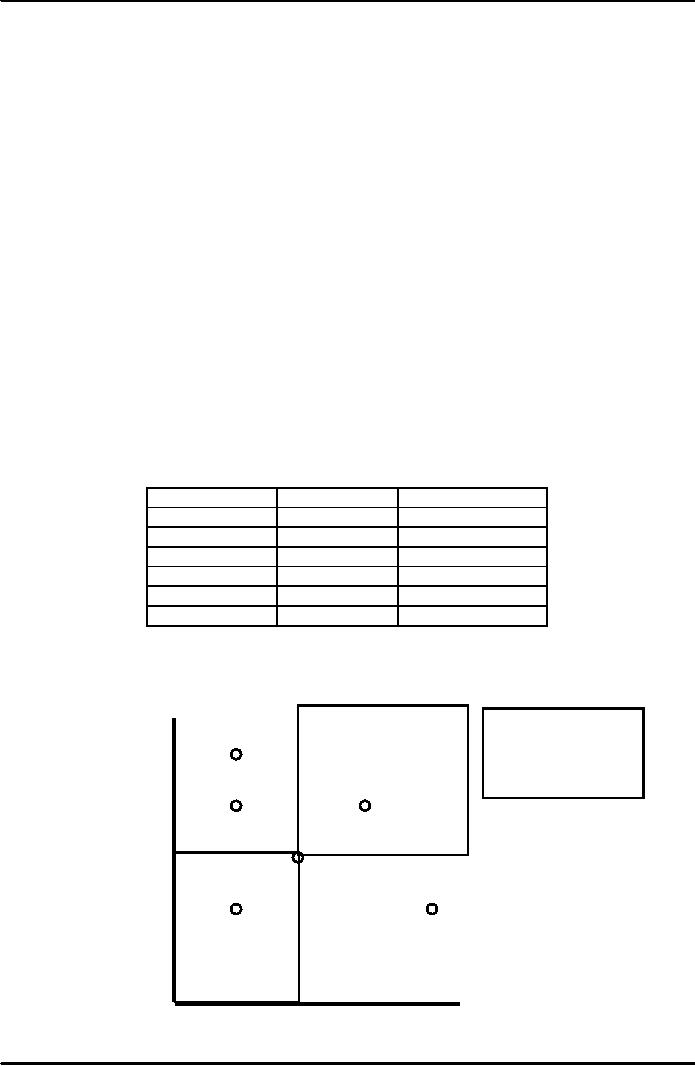
Microeconomics
ECO402
VU
Lesson
6
Consumer
Behavior
The
explanation of how consumers
allocate their resources
(income) to the purchase
of
different
goods and services to
maximize their well
being.
There
are three steps involved in
the study of consumer
behavior.
1)
We will study consumer
preferences.
�
To
describe how and why
people prefer one good to
another.
2)
Then we will turn to budget
constraints.
�
People
have limited incomes.
3)
Finally, we will combine
consumer preferences and
budget constraints
to
determine consumer
choices.
�
What
combination of goods will
consumers buy to maximize
their
satisfaction?
Consumer
Preferences
�
Market
Baskets
A
market
basket is a collection
of one or more
commodities.
�
�
One
market basket may be
preferred over another
market basket containing
a
different
combination of goods.
�
Three
Basic Assumptions
1)
Preferences are
complete.
2)
Preferences are
transitive.
3)
Consumers always prefer more
of any good to less.
Market
Basket
Units
of Food
Units
of Clothing
A
20
30
B
10
50
D
40
20
E
30
40
G
10
20
H
10
40
Indifference
curves represent
all combinations of market
baskets that provide
the
same
level of satisfaction to a
person.
Clothing
The
consumer prefers
(units
per week)
A
to
all combinations
B
in
the blue box,
while
50
all
those in the yellow
box
are preferred to A.
H
E
40
A
30
D
G
20
10
Food
10
20
30
40
(units
per week)
22
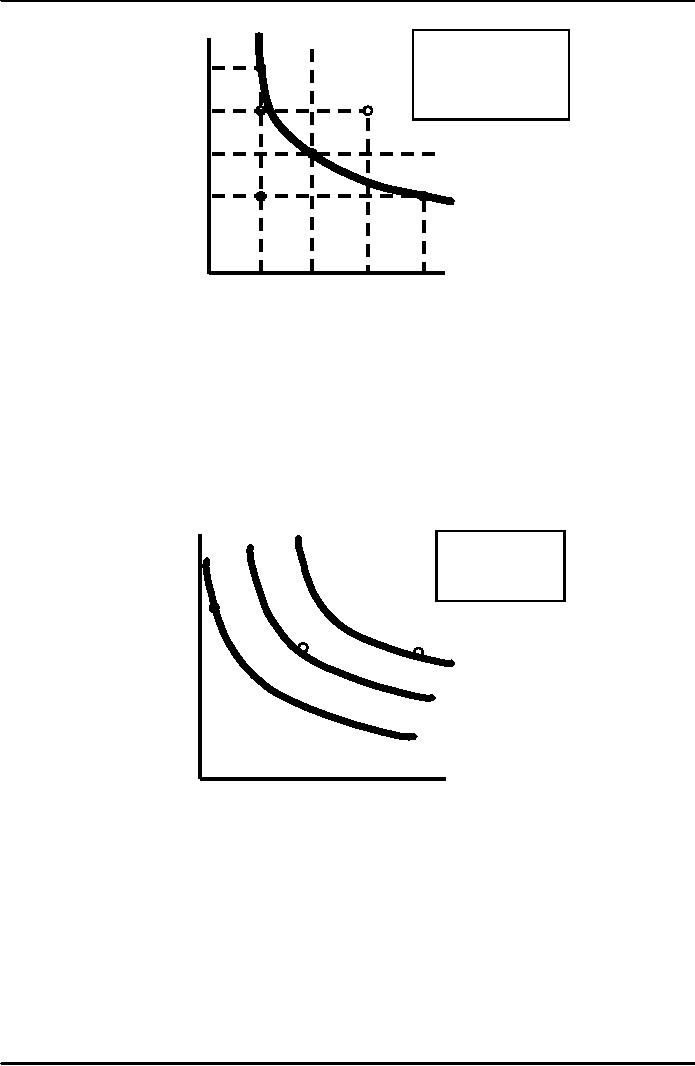
Microeconomics
ECO402
VU
Clothing
Combination
B,A,
& D
(units
per
yield
the same satisfaction
B
week)
50
�E
is
preferred to U
1
�U
is
preferred to H
& G
H
E
40
1
A
30
D
20
U1
G
10
Food
10
20
30
40
(units
per week)
Indifference
Curves
Indifference
curves slope downward to the
right.
�
If it
sloped upward it would
violate the assumption that
more of any
commodity
is preferred to less.
Any
market basket lying above
and to the right of an
indifference curve is
preferred
to any market basket that
lies on the indifference
curve.
An
indifference
map is
a set of indifference curves
that describes a
person's
preferences
for all combinations of two
commodities.
Each
indifference curve in the
map shows the market
baskets among which
the
person
is indifferent.
Clothing
(units
per
Market
basket A
week)
is
preferred to B.
Market
basket B
is
preferred
to D.
D
B
A
U3
U2
U1
Food
(units
per week)
23
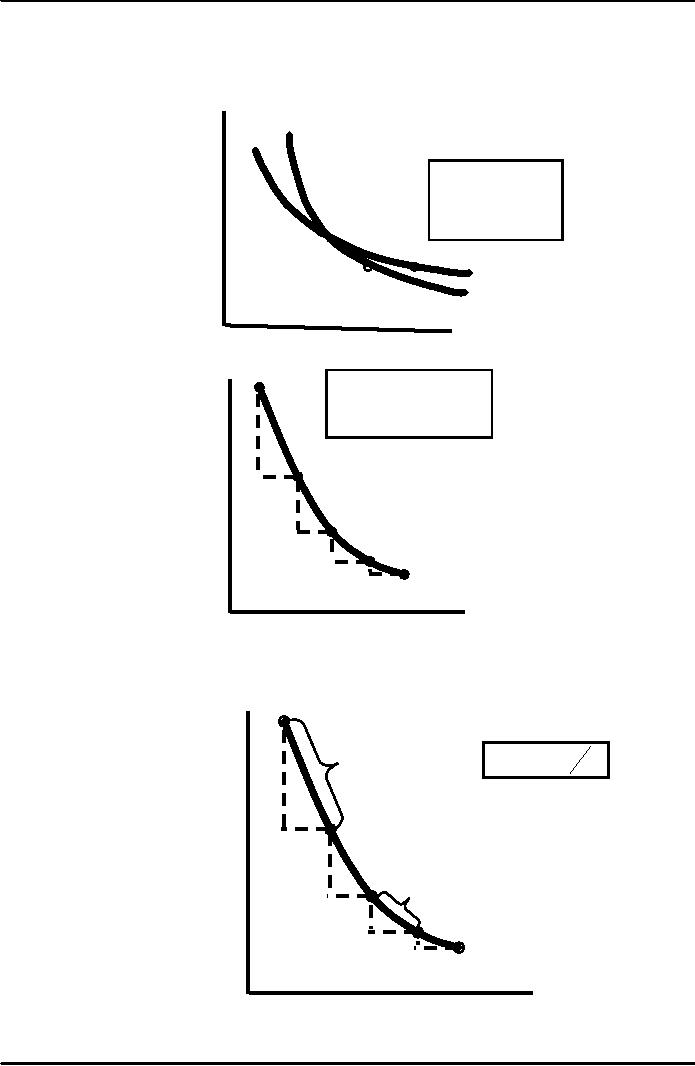
Microeconomics
ECO402
VU
Indifference
Curves
Finally,
indifference curves cannot
cross.
�
This
would violate the assumption
that more is preferred to
less.
Indifference
Curves
Clothing
Cannot
Cross
U
(units
per week)
U
The
consumer should
be
indifferent between
A,
B and
D.
However,
B
contains
more of
A
both
goods than D.
B
D
Food
(units
per week)
A
Observation:
The amount
Clothing
16
of
clothing given up for
(units
a
unit of food decreases
per
week) 14
from
6 to 1
12
-6
10
B
1
8
-4
D
6
1
E
-2
G
4
1
-1
1
2
Food
1
2
3
4
5
(units
per week)
The
marginal rate of substitution
(MRS)
quantifies
the amount of one good a
consumer
will
give up to obtain more of
another good.
It is
measured by the slope of the
indifference curve.
A
Clothing
16
(units
per
week)
MRS
= -
ΔC
14
MRS
=
6
ΔF
-6
12
10
B
1
8
-4
D
MRS
=
2
6
1
E
-2
G
4
1
-1
1
2
Food
1
2
3
4
5
(units
per week)
24
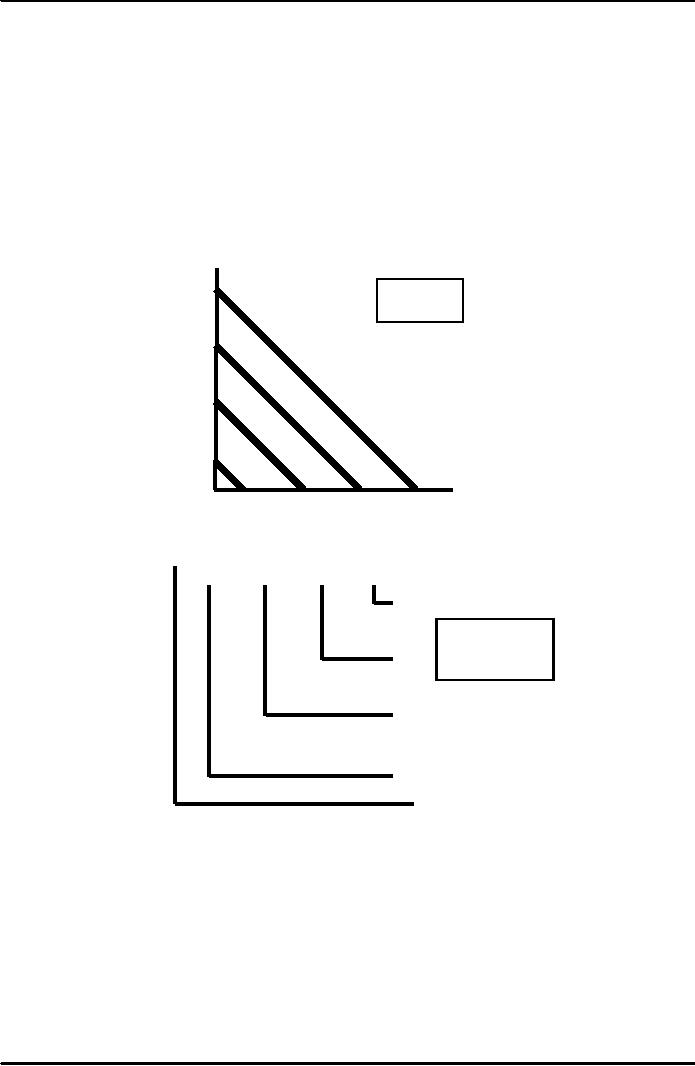
Microeconomics
ECO402
VU
We
will now add a fourth
assumption regarding consumer
preference:
Along an
indifference curve there is a
diminishing marginal rate of
substitution.
�
Note
the MRS for AB was 6, while
that for DE was 2.
Marginal
Rate of Substitution
Indifference
curves are convex because as
more of one good is
consumed, a
consumer
would prefer to give up
fewer units of a second good
to get additional
units
of the first one.
Consumers
prefer a balanced market
basket
Perfect
Substitutes and Perfect
Complements
�
Two
goods are perfect
substitutes when the
marginal rate of
substitution
of
one good for the
other is constant.
Apple
4
Juice
Perfect
(glasses
Substitutes
)
3
2
1
Orange
Juice
(glasses)
2
0
1
3
4
Two
goods are complements when
the indifference curves for
the goods
�
are
shaped as right
angles.
Left
Shoes
4
Perfect
Complements
3
2
1
1
2
3
4
0
Right
Shoes
BADS
Things
for which less is preferred
to more
Example
Air
pollution
Designing
New Automobiles
Automobile
executives must regularly
decide when to introduce new
models
and
how much money to invest in
restyling.
An
analysis of consumer preferences
would help to determine when
and if car
companies
should change the styling of
their cars.
25
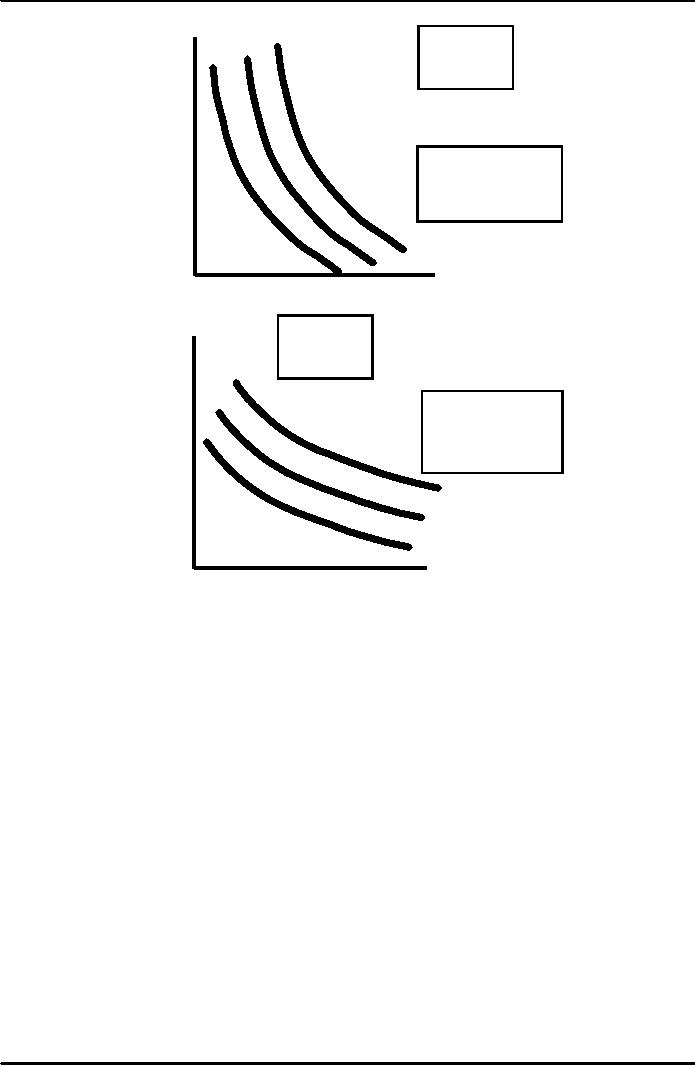
Microeconomics
ECO402
VU
Consumer
Styling
Preference
A:
High
MRS
These
consumers are
willing
to give up
considerable
styling
for additional
performance
Performance
Consumer
Preference
B:
Styling
Low
MRS
These
consumers are
willing
to give up
considerable
performance
for
additional
styling
Performance
Designing
New Automobiles
What Do
You Think?
�
How
can we determine the
consumers preference?
Designing
New Automobiles
A
recent study of automobile
demand in the USA shows that
over the past
two
decades
most consumers have
preferred styling over
performance.
Growth
of Japanese Imports
1970's
and 1980's
�
15% of
domestic cars underwent a
style change each
year
�
This
compares to 23% for
imports
26
Table of Contents:
- ECONOMICS:Themes of Microeconomics, Theories and Models
- Economics: Another Perspective, Factors of Production
- REAL VERSUS NOMINAL PRICES:SUPPLY AND DEMAND, The Demand Curve
- Changes in Market Equilibrium:Market for College Education
- Elasticities of supply and demand:The Demand for Gasoline
- Consumer Behavior:Consumer Preferences, Indifference curves
- CONSUMER PREFERENCES:Budget Constraints, Consumer Choice
- Note it is repeated:Consumer Preferences, Revealed Preferences
- MARGINAL UTILITY AND CONSUMER CHOICE:COST-OF-LIVING INDEXES
- Review of Consumer Equilibrium:INDIVIDUAL DEMAND, An Inferior Good
- Income & Substitution Effects:Determining the Market Demand Curve
- The Aggregate Demand For Wheat:NETWORK EXTERNALITIES
- Describing Risk:Unequal Probability Outcomes
- PREFERENCES TOWARD RISK:Risk Premium, Indifference Curve
- PREFERENCES TOWARD RISK:Reducing Risk, The Demand for Risky Assets
- The Technology of Production:Production Function for Food
- Production with Two Variable Inputs:Returns to Scale
- Measuring Cost: Which Costs Matter?:Cost in the Short Run
- A Firm’s Short-Run Costs ($):The Effect of Effluent Fees on Firms’ Input Choices
- Cost in the Long Run:Long-Run Cost with Economies & Diseconomies of Scale
- Production with Two Outputs--Economies of Scope:Cubic Cost Function
- Perfectly Competitive Markets:Choosing Output in Short Run
- A Competitive Firm Incurring Losses:Industry Supply in Short Run
- Elasticity of Market Supply:Producer Surplus for a Market
- Elasticity of Market Supply:Long-Run Competitive Equilibrium
- Elasticity of Market Supply:The Industry’s Long-Run Supply Curve
- Elasticity of Market Supply:Welfare loss if price is held below market-clearing level
- Price Supports:Supply Restrictions, Import Quotas and Tariffs
- The Sugar Quota:The Impact of a Tax or Subsidy, Subsidy
- Perfect Competition:Total, Marginal, and Average Revenue
- Perfect Competition:Effect of Excise Tax on Monopolist
- Monopoly:Elasticity of Demand and Price Markup, Sources of Monopoly Power
- The Social Costs of Monopoly Power:Price Regulation, Monopsony
- Monopsony Power:Pricing With Market Power, Capturing Consumer Surplus
- Monopsony Power:THE ECONOMICS OF COUPONS AND REBATES
- Airline Fares:Elasticities of Demand for Air Travel, The Two-Part Tariff
- Bundling:Consumption Decisions When Products are Bundled
- Bundling:Mixed Versus Pure Bundling, Effects of Advertising
- MONOPOLISTIC COMPETITION:Monopolistic Competition in the Market for Colas and Coffee
- OLIGOPOLY:Duopoly Example, Price Competition
- Competition Versus Collusion:The Prisoners’ Dilemma, Implications of the Prisoners
- COMPETITIVE FACTOR MARKETS:Marginal Revenue Product
- Competitive Factor Markets:The Demand for Jet Fuel
- Equilibrium in a Competitive Factor Market:Labor Market Equilibrium
- Factor Markets with Monopoly Power:Monopoly Power of Sellers of Labor